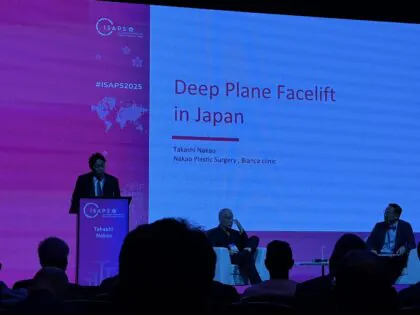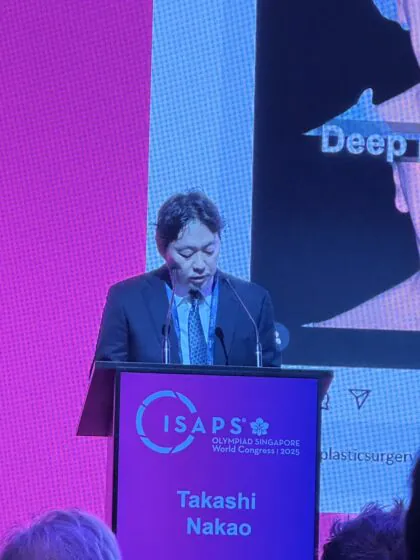International Society of Aesthetic Plastic Surgery ISAPS – Presentation

On the second day of ISAPS, I had my presentation first thing in the morning.
In the photo above, on the right side, are Dr. Marten and Dr. Wong.
Dr. Marten is a leading authority on the High SMAS technique in the United States.
Deep plane facelifts are becoming the mainstream approach for incisional lifts, including in Japan, he spoke extensively about what the definition of a "deep plane" is.
Dr. Wong is a renowned expert in Asian facelifts. He is a key member of the Mendelsohn Group, the leading authority on facelifts and has written a well-known article on Asian deep plane facelifts. He also has extensive knowledge of the upper and lower eyelids and if you are a plastic surgeon, you have seen the illustrations in his papers.
My presentation was about "Deep Plane Facelift in Japan" and reported the following:
- - Current status of sagging treatments in Japan
- - Treatment progression leading up to facelift
- - Differences in skeletal structure between Japanese and Western patients
- - Effectiveness and challenges of the deep plane facelift based on these characteristics
- - Innovations in surgical design
- - Surgical results
- - Expected future trends
One remark,
Japanese people tend to have forward-projecting, laterally prominent cheeks, the Japanese have a slightly different skeletal structure from that of Western people, with a smaller chin and lower jaw than those in Southern Asia.
Traditional facelift techniques have often struggled to address the midface area effectively, but the deep plane facelift the way to overcome this problem.
However, lifting the cheeks can introduce new challenges, so I focused on strategies to address these, as well as issues related to smaller jaw structures.
I became a bit carried away with enthusiasm and went slightly over time. I may have caused a slight inconvenience to Dr. Wong, who was chairing the session, but I believe I was able to convey the key points I wanted to share.













